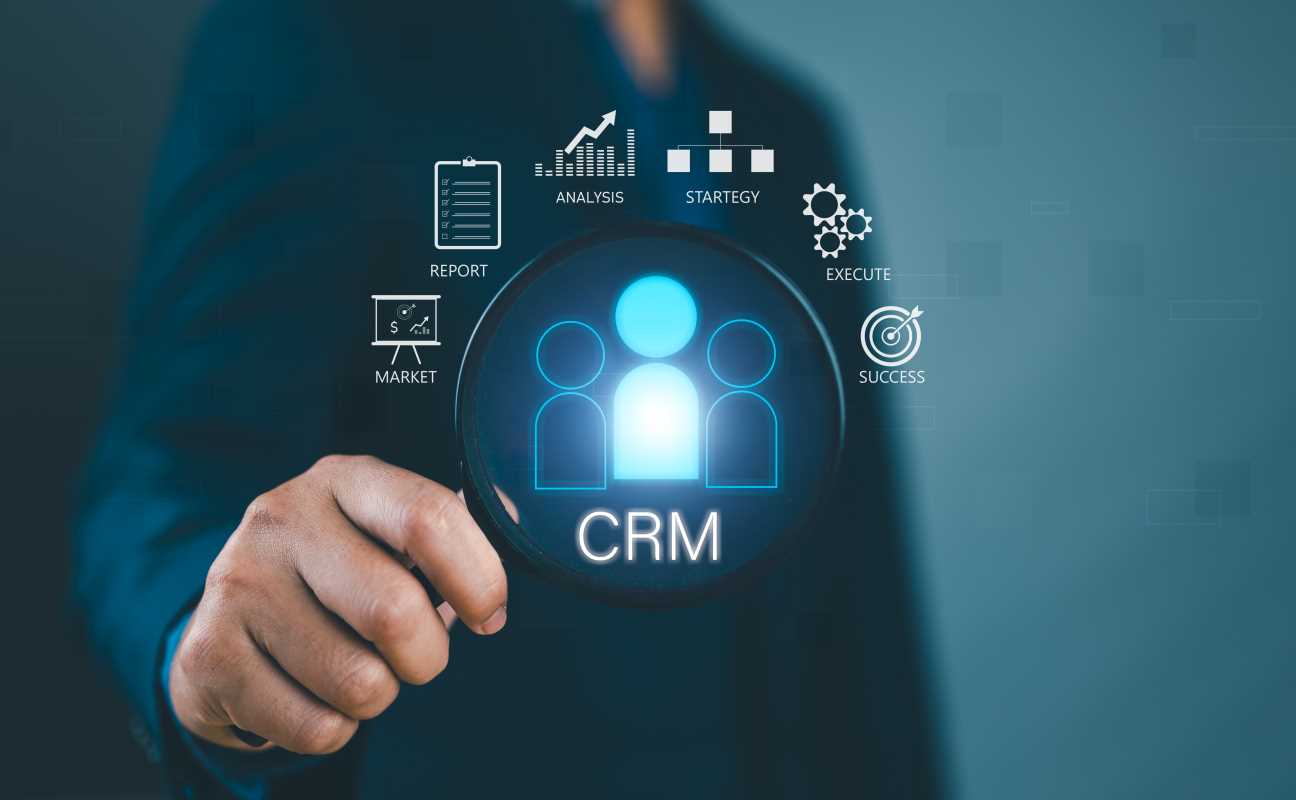Your digital marketing might be great at attracting attention. You run clever social media campaigns, write engaging blog posts, and create ads that get clicks. But what happens after that initial click? If you’re like many businesses, that’s where things get messy. Customer information gets scattered across spreadsheets, email inboxes, and sticky notes. The marketing team has no idea what the sales team is doing, and the customer feels like they’re talking to a different company with every interaction. This disconnect is a major roadblock to growth. This is the problem that Customer Relationship Management (CRM) software is built to solve.
What is CRM Software?
At its core, a Customer Relationship Management (CRM) system is a technology for managing all your company’s relationships and interactions with customers and potential customers. When people talk about a CRM, they are usually referring to a software platform that helps with contact management, sales management, and productivity. The goal is simple: improve business relationships to grow your business.
Think of it as a super-powered digital address book. A basic address book holds names, emails, and phone numbers. A CRM holds that information plus a complete history of every interaction that person has ever had with your company. This includes:
- Which website pages they have visited
- Which emails they have opened and clicked
- Which forms they have filled out
- Records of phone calls and meetings with the sales team
- Their purchase history
- Any customer support tickets they have submitted
By consolidating all of this information into one central place, a CRM gives everyone in your company—from marketing to sales to customer service—a complete, 360-degree view of the customer. This shared understanding is the foundation for creating a seamless and personalized customer experience.
Key Features of Modern CRM Software
While different CRMs offer a wide range of features, most modern platforms are built around a few core functionalities that are essential for marketing and sales teams.
1. Contact Management
This is the fundamental feature of any CRM. It’s the ability to create a rich database of all your contacts, including leads, prospects, and existing customers. Each contact record serves as a living profile that is automatically updated with new information and interactions over time.
2. Lead and Deal Tracking
CRMs provide a visual pipeline to track leads as they move through the sales process. You can see which stage each deal is in (e.g., New Lead, Qualified, Proposal Sent, Closed-Won), helping sales teams stay organized and prioritize their efforts.
3. Automation Workflows
This is where CRMs become incredibly powerful. You can create automated workflows that trigger actions based on contact behavior. For example, you can automatically assign a new lead to a salesperson, send a series of follow-up emails, or update a contact’s status when they take a specific action.
4. Reporting and Analytics
A good CRM comes with robust reporting tools that allow you to track key performance indicators (KPIs) and measure the effectiveness of your efforts. You can build custom dashboards to monitor everything from lead generation to sales velocity and campaign ROI.
5. Integration Capabilities
Modern CRMs are designed to be the hub of your technology stack. They integrate with hundreds of other tools you already use, such as your email marketing platform, social media accounts, and accounting software, ensuring that data flows seamlessly between all your systems.
6 Ways CRM Boosts Your Digital Marketing
Integrating a CRM with your digital marketing tools isn't just a nice-to-have; it's a game-changer. Here are six specific ways a CRM can supercharge your marketing efforts.
1. Unlocking Deep Audience Segmentation
Generic, one-size-fits-all marketing messages no longer work. A CRM allows you to move beyond basic demographic segmentation (like age and location) and create hyper-targeted audience segments based on rich behavioral data.
Because the CRM stores every piece of customer data, you can build segments like:
- "Contacts who have visited the pricing page more than three times in the last week but haven't made a purchase."
- "Customers who have bought Product A but not Product B."
- "Leads who downloaded our e-book on 'Advanced Marketing' but haven't engaged with any sales emails."
By creating these specific segments, you can send incredibly relevant and timely marketing messages that speak directly to the recipient's needs and interests, dramatically increasing your conversion rates.
2. Achieving True Personalization at Scale
Personalization is more than just using a contact's first name in an email subject line. True personalization is about using what you know about a person to tailor their entire experience with your brand. A CRM is the engine that makes this possible.
By pulling data from the CRM, your marketing tools can:
- Showcase dynamic content on your website that changes based on a visitor's past behavior or industry.
- Send an abandoned cart email that includes a picture of the exact product the customer left behind.
- Recommend blog posts or products that are relevant to the content a user has previously engaged with.
This level of personalization makes the customer feel understood and valued, which builds trust and loyalty.
3. Streamlining Lead Nurturing with Automation
Not all leads are ready to buy the moment they fill out a form. Many need to be "nurtured" with helpful content over time. A CRM allows you to automate this entire process.
You can set up lead nurturing workflows that are triggered when a new lead enters the CRM. These workflows can automatically send a sequence of emails over several weeks, educating the prospect about your products, sharing customer success stories, and addressing common pain points. The CRM can track their engagement, and once a lead reaches a certain engagement score (e.g., they’ve opened 5 emails and visited the pricing page), the system can automatically notify a salesperson that the lead is now "hot" and ready for a call.
4. Aligning Your Sales and Marketing Teams
One of the biggest sources of friction in many companies is the disconnect between sales and marketing. Marketing complains that sales doesn't follow up on their leads, while sales complains that the leads from marketing are low quality. A CRM bridges this gap by creating a shared platform and a common language. This is often called "Smarketing."
With a CRM, the marketing team can see exactly what happens to a lead after it's handed over to sales. They can see if the salesperson followed up, what the outcome was, and which leads ultimately turned into revenue. This feedback loop allows marketing to focus on generating more of the types of leads that actually close, while the sales team gets a complete history of a lead's marketing interactions, giving them valuable context for their first conversation.
5. Improving Customer Retention
A CRM isn't just for acquiring new customers; it's also a powerful tool for keeping the ones you already have. By tracking the entire customer lifecycle, the CRM can help you identify at-risk customers.
For example, you can create a report that flags customers who haven't logged into your software or made a purchase in the last 90 days. You can then enroll these customers in an automated "win-back" campaign that offers them a special discount or reminds them of the value of your product. Proactively engaging with at-risk customers is far more cost-effective than trying to acquire a new one.
6. Measuring Marketing ROI with Confidence
Ultimately, every business wants to know if their marketing dollars are being spent wisely. A CRM with closed-loop reporting allows you to connect marketing spending directly to revenue.
Because the CRM tracks the entire journey, you can answer questions like, "How much revenue did our summer social media campaign generate?" The system can attribute revenue back to the original marketing touchpoint that brought the customer into your world. This allows you to prove the value of your marketing efforts and make data-driven decisions about which channels and campaigns deserve more investment.
 (Image via
(Image via





